March 27 to April 2
After placing fifth in the 1964 Miss Universe pageant in Miami, “Miss China” Yu Yi (于儀) toured the US to great fanfare. The Chinese community in San Francisco called her the “pride of the Republic of China (ROC),” and she even received the key to New York City.
Taiwan’s Miss China pageant produced three winners that year who performed on the international stage. Lin Su-hsin (林素幸), the second Taiwan-born Miss China, did even better, claiming third place in London’s Miss World. She says she was elated to see the ROC flag flying in the UK, which had severed ties with Taiwan in 1950, and also toured Europe and East Asia afterward to promote the ROC.
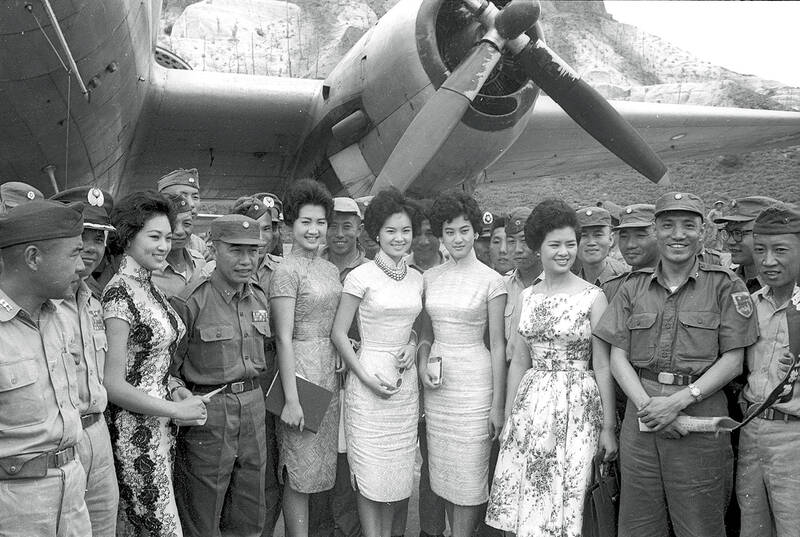
Photo: CNA
Despite this success, the pageant was canceled the following year due to various controversies and financial difficulties. It did not resume until 1988 as “Miss Republic of China.”
Even until 1986, the government insisted that there was no place for beauty pageants in Taiwan due its austerity policy and the need to focus on war-readiness against the Chinese communists. But ever since the US broke ties with Taiwan in 1979, there had been discussions about resuming the pageant to boost the nation’s visibility and show the world its economic progress.
In 1987, Miss Universe officials personally visited Taipei and offered to let the city host the final competition. They noted that despite its economic miracle, Taiwan was still a mysterious country to Westerners. It was a great opportunity as the event’s worldwide broadcast would include a 30-minute video introducing the nation.
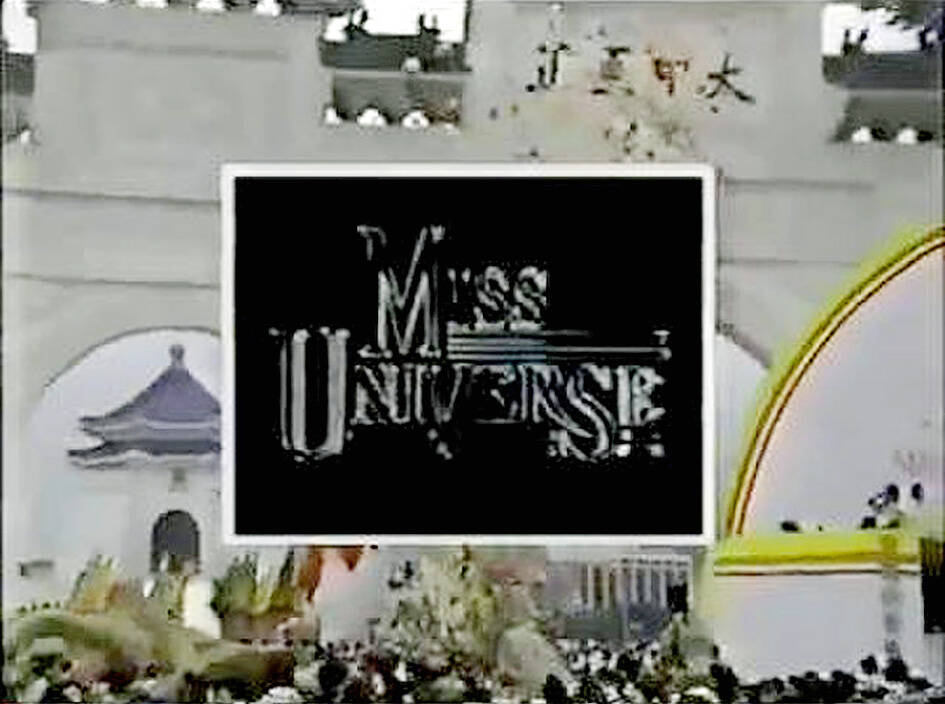
Photo courtesy of Wikimedia Commons
In October that year, the government lifted the ban on national pageants. Miss China was revived on April 1, 1988, but it wasn’t the only one as four other pageants were launched that year.
PROMOTING CHINESE VALUES
The earliest nationwide pageant in Taiwan was the “Miss Trade Show” (商展小姐) event in 1959. The goal of the event was to “promote the use of local products among Taiwanese” and “encourage good manners toward customers,” and the judging criteria was “good service, politeness and consideration, dignified manners and familiarity with the business they represent.” It attracted 66 contestants, who were voted on by visitors to the National Products Expo where they worked.
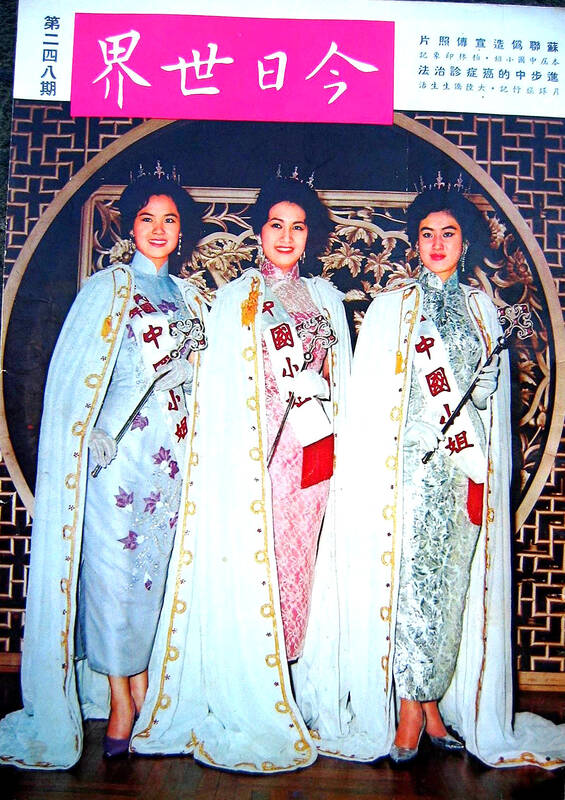
Photo: CNA
“It’s evident that ‘Miss Trade Show’ did not primarily focus on beauty,” writes Chiu Su-wei (邱思瑋) in “The post-World War II ‘Miss China’ pageant and its controversies” (戰後台灣中國小姐選拔及爭議).
That same year, Miss Universe producer Oscar Meinhardt was looking to expand his event to Taiwan, with the winner heading to Long Beach, California for the inaugural Miss International competition. He contacted the Dawa News (大華晚報), who agreed to sponsor the event.
Dawa News publisher Geng Hsiu-ye (耿修業) announced that the mission was to promote cultural exchange and establish well-mannered, healthy, beautiful and clever role models for modern Chinese women.
The news garnered mostly positive responses. Tunghai University (東海大學) dean Tang Shou-chien (唐守謙) wrote in the paper: “By letting these unofficial female ambassadors go abroad, we can further promote the inherent virtues of Chinese women to our allies, and carry forward the traditional spirit of Chinese history and culture.”
Registration began on April 2, 1960 for the preliminaries in Taipei, Taichung and Kaohsiung. Dawa News promoted it as a great opportunity for young women and a “respectable social activity.” In one comic strip promoting the event, it said that the contestants should have the “beauty of a peach blossom, purity of a lotus flower, elegance of a chrysanthemum and noble sentiments of a plum blossom.”
The paper held a “guess the winner” contest with cash prizes to promote the event to the public, garnering more than 30,000 responses, and called for essay submissions describing one’s ideal “Miss China.”
CONTROVERSIAL WIN
The criteria was relatively conservative — the contestant’s face made up 20 percent of her score, her body 30 percent with the rest going to demeanor, manners, speaking ability and posture. They would also not wear swimsuits nor reveal their three sizes, instead donning evening gowns, casual wear and traditional clothing.
They needed to be over 18 years old and have some high school education — at a time when only 1.46 percent of women made it to high school or vocational school. A total of 193 hopefuls passed the screenings, 61 of them college students or graduates.
Only in the Taipei preliminaries were there more female judges than males. Several female writers complained about this: Lee Fang (李枋) told Dawa News that there should be at least half female judges because “women know women better.”
Ten women advanced to the semi-finals, where they were asked to detail their aspirations. Four hoped to become housewives, while the other six wanted to be independent, modern women; in particular two wanted to be diplomats to promote to the world the “base to reclaim China.” Five advanced to the finals, where Lin Ching-yi (林靜宜) was crowned the nation’s first Miss China.
Lin’s win was controversial, as she was half-Japanese and received a Japanese education until the end of the war. Anti-Japanese sentiment was high, and many spectators did not agree with the results. Some even booed and left before the awards ceremony. In addition to the prize money and an all-expense paid trip to the US, Lin also received a 3-carat diamond and a then-popular Parker gold pen.
Lin lost in the first round in California, but her diplomatic contributions were noted. Not only did the ROC flag fly in Long Beach for the first time, a brief description of the country was also read during the contest.
WINNING ABROAD
Miss China continued the following year, where three winners were sent to Miss International in Long Beach, Miss World in London and Miss Universe in Miami. Although Ma Wei-chun (馬維君) failed to place in Long Beach, she toured the US and garnered much attention on her various stops, with the city of Stockton, California even designating Aug. 13 “Miss China Day.” Lee Hsiu-ying (李秀英) finished second in London, becoming the first ROC contestant to finish in the top five.
The contest was suspended in 1963 due to the massive wave of refugees fleeing China to Hong Kong and Macau, as the government didn’t think such a tragic time was a suitable for a beauty pageant.
Despite resuming the following year, the contest resulted in massive financial losses for the organizers. There were also various controversies regarding the personal lives of the winners, and with many of them marrying into prominent families after their win, it was criticized as just a platform for powerful officials to select daughters-in-law.
With the government promoting austerity and the nation still economically struggling, the contest was also criticized as lavish and unnecessary. Finally, with the government considering that there were many other ways to enhance diplomacy, it was canceled.
With China refusing to participate due to contests being a “capitalistic activity,” Miss Universe officials first visited Taiwan in 1984 to ask the government to resume the pageant. Their comments that participation “creates an opportunity for a country to be seen on the international stage” sparked widespread debate.
Supporters said it was the perfect chance for Taiwan to show off its progress over the previous decade, but many also spoke out against the objectification of women and perpetuating singular, male-centric standards of beauty.
This debate continued through 1986, when 69.3 percent of respondents to a national survey supported reinstating the pageant. The top supporting reason was “international promotion,” while many detractors said it would “affect social morals.”
That same year, the “Miss Port City” (港都小姐) was launched in Kaohsiung as a side event to the Taiwan District Games (台灣區運動會). However, it was a regional contest in name only, as anyone from Taiwan could participate. The winner, Chiu Hui-yueh (邱惠月), headed to Tokyo for the Miss Wonderland pageant as “Miss Taiwan (ROC),” winning third place.
With this international victory, there was no stopping the tide, and the government could only relent the following year.
Taiwan in Time, a column about Taiwan’s history that is published every Sunday, spotlights important or interesting events around the nation that either have anniversaries this week or are tied to current events.

Last week, the the National Immigration Agency (NIA) told the legislature that more than 10,000 naturalized Taiwanese citizens from the People’s Republic of China (PRC) risked having their citizenship revoked if they failed to provide proof that they had renounced their Chinese household registration within the next three months. Renunciation is required under the Act Governing Relations Between the People of the Taiwan Area and the Mainland Area (臺灣地區與大陸地區人民關係條例), as amended in 2004, though it was only a legal requirement after 2000. Prior to that, it had been only an administrative requirement since the Nationality Act (國籍法) was established in

Three big changes have transformed the landscape of Taiwan’s local patronage factions: Increasing Democratic Progressive Party (DPP) involvement, rising new factions and the Chinese Nationalist Party’s (KMT) significantly weakened control. GREEN FACTIONS It is said that “south of the Zhuoshui River (濁水溪), there is no blue-green divide,” meaning that from Yunlin County south there is no difference between KMT and DPP politicians. This is not always true, but there is more than a grain of truth to it. Traditionally, DPP factions are viewed as national entities, with their primary function to secure plum positions in the party and government. This is not unusual
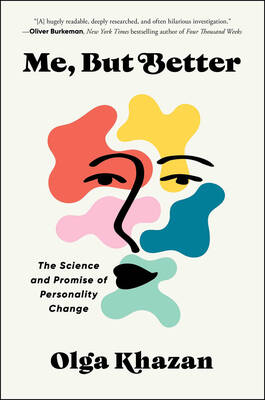
The other day, a friend decided to playfully name our individual roles within the group: planner, emotional support, and so on. I was the fault-finder — or, as she put it, “the grumpy teenager” — who points out problems, but doesn’t suggest alternatives. She was only kidding around, but she struck at an insecurity I have: that I’m unacceptably, intolerably negative. My first instinct is to stress-test ideas for potential flaws. This critical tendency serves me well professionally, and feels true to who I am. If I don’t enjoy a film, for example, I don’t swallow my opinion. But I sometimes worry
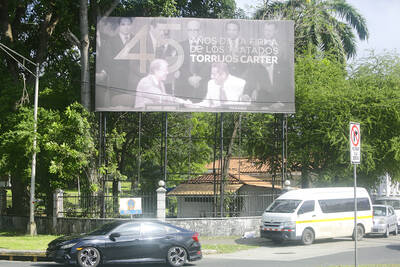
US President Donald Trump’s bid to take back control of the Panama Canal has put his counterpart Jose Raul Mulino in a difficult position and revived fears in the Central American country that US military bases will return. After Trump vowed to reclaim the interoceanic waterway from Chinese influence, US Defense Secretary Pete Hegseth signed an agreement with the Mulino administration last week for the US to deploy troops in areas adjacent to the canal. For more than two decades, after handing over control of the strategically vital waterway to Panama in 1999 and dismantling the bases that protected it, Washington has